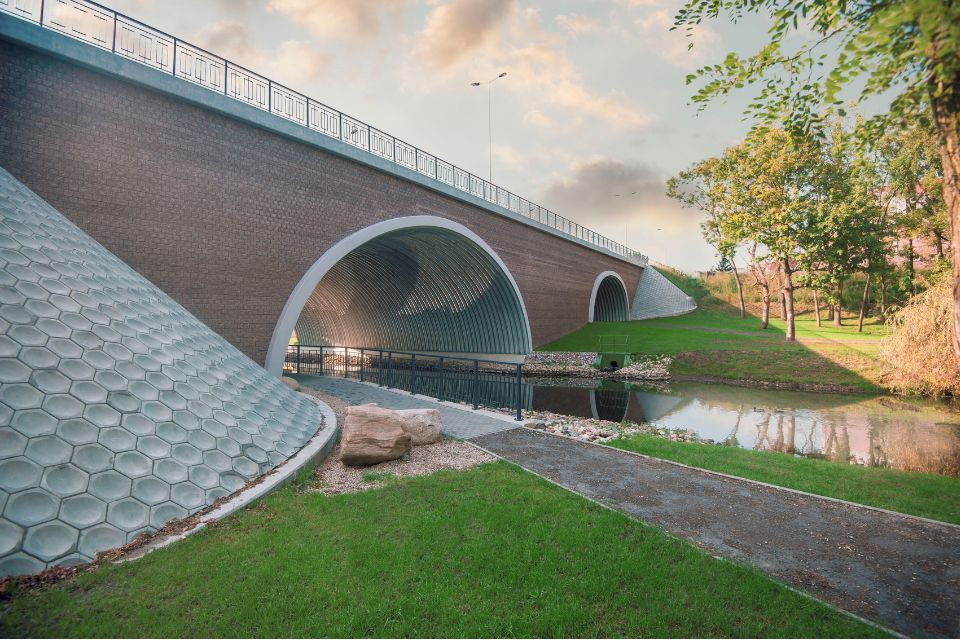By joining the SteelZero Initiative, ViaCon supports clean, green steel – committing to net-zero steel by 2050
As we know, ViaCon has a clear focus on the future, with a vision and plan for leading and influencing sustainability in the infrastructure sector. One pathway to a cleaner, greener future is carbon neutrality. One of ViaCon’s ambitions, and commitments, toward becoming net zero is our participation in the SteelZero initiative.
What is SteelZero?
SteelZero is a global initiative that aims to accelerate the transition to a net-zero steel industry. SteelZero members, organizations within the steel value chain, commit to making the shift to 100% net-zero steel by 2050. By 2030, at least 50% of produced or sourced steel must meet specific science-based, CO2-reduction conditions* that contribute to the ultimate goal of net-zero steel.
Why ViaCon is committing to SteelZero
The infrastructure industry plays a central role in driving overall sustainability and circularity efforts for society as a whole. Responsible organizations within the sector know that the responsibility to change is incumbent on us. ViaCon has in fact led the charge, affirming that steel can contribute to a greener future.
Today, steel production is a more sustainable option than most alternatives, but production and sourcing can still be optimized to reduce emissions. As a 100% recyclable and reusable material, steel will also play a significant role in the growth of the circular economy. As a SteelZero member, ViaCon joins other global steel-using and steel-producing companies to capitalize on the advantages of steel. Together, we can collectively use our influence and purchasing power to move global markets and industries toward more responsible production, sourcing and reuse/recycling of steel to meet decarbonization targets and ultimately achieve carbon neutrality.
“Participation in the SteelZero initiative is one decisive action we can take to support a balance between sustainable business growth and environmental principles and stewardship,” our Chief HR and Sustainability Officer, Mattias Hakeröd, explained. “A commitment to the SteelZero initiative is a commitment to reducing the burden from virgin material and creating a path to to net-zero steel and, more broadly, the circular economy.”
The benefits of participating in SteelZero
ViaCon alone cannot achieve the green transition needed to push the sustainability agenda forward. Everyone in the steel value chain will play a role and will likewise benefit from committing to forward-looking decarbonization efforts.
For ViaCon, participation in SteelZero sends a signal to steel suppliers that we are serious about ESG and will aggressively associate our name and our brand with climate-responsible endeavors. We secure our long-term value by committing to a more positive, environmentally sound posture.
For customers, suppliers, partners and investors alike, ViaCon’s SteelZero participation is evidence of a long-term sustainability strategy that supports the creation of a decarbonized steel market globally. This secures the green credentials of everyone in the steel value chain, helping everyone meet wider decarbonization targets, and underpins the drive to a more circular economy, which is on everyone’s agenda.
The future is made of net-zero steel
ViaCon Group’s net-zero steel ambitions are just one commitment in our pursuit of both sustainability and wider circular economy goals. Being a part of the SteelZero initiative supports both our long-term sustainability strategy and our shorter-term goal to be known as the sustainable alternative in the market by 2025.
*2030 conditions:
Interim target = Commitment to procuring, specifying or stocking at least 50% from one of the following pathways:
– ResponsibleSteelTM Certified Steel or equivalent
– Steel produced by a steelmaking site where the site’s corporate owner has medium-term, quantitative science-based GHG emissions target for the corporation
– Low Embodied Carbon Steel, with a defined specific emissions intensity which takes into account the proportion of end-of-life scrap
